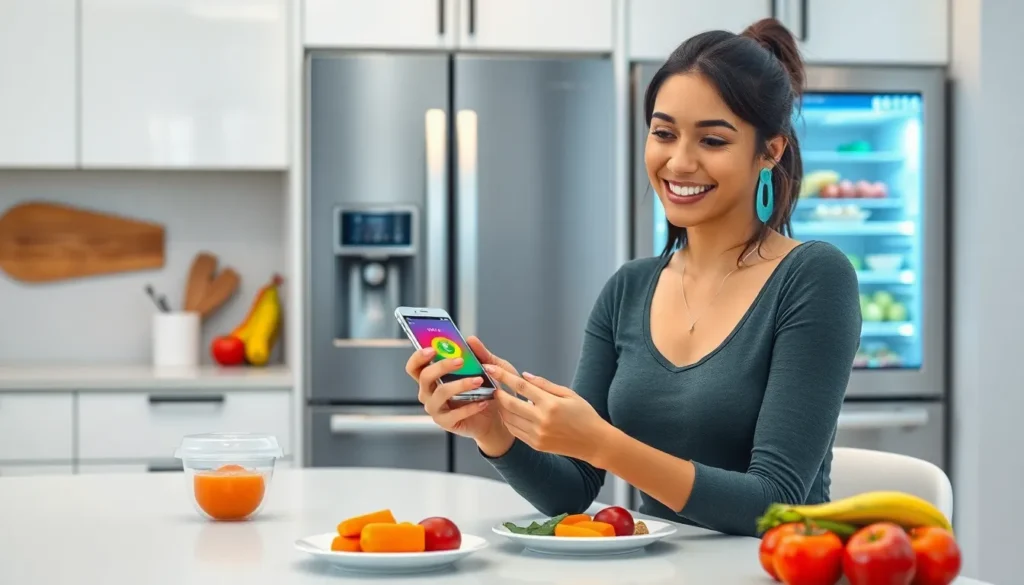Table of Contents
ToggleIn today’s world, technology isn’t just a tool; it’s practically a member of the family. From smartphones that wake us up (and sometimes keep us up) to smart fridges that remind us we’re out of milk, it’s hard to imagine life without these digital companions. They help us navigate our daily chaos, turning mundane tasks into effortless routines—because who really wants to remember their grocery list?
Yet, with all this convenience comes a quirky relationship with our gadgets. They can be both our best friends and our most frustrating foes. Ever tried to explain your Wi-Fi issues to a tech support agent while your toddler’s streaming cartoons in the background? Welcome to the modern age! Embracing technology in daily life means navigating its ups and downs, but it’s a journey worth taking. After all, who wouldn’t want a little extra help in this fast-paced world?
Impact of Technology in Our Daily Life
Technology influences daily life significantly. Communication improves through instant messaging and social media platforms. People connect effortlessly across distances. Work environments adapt with remote tools, enhancing productivity.
Smartphones serve as multifunctional devices, combining communication, entertainment, and information access. Daily tasks become streamlined with applications for scheduling, fitness tracking, and online shopping. Various devices also manage households, from smart thermostats to security systems.
Healthcare benefits as technology advances. Telemedicine allows patients to consult doctors remotely, saving time and improving access to care. Health apps enable individuals to monitor their conditions directly.
Education experiences transformation through digital tools. Online courses provide access to learning resources, expanding opportunities for students. Interactive technology engages learners, fostering better understanding of subjects.
Privacy concerns arise due to increased reliance on technology. Data breaches and surveillance present risks that must be addressed responsibly. Users must remain vigilant about personal information sharing.
Despite challenges, technology enhances overall quality of life. It fosters innovation and connectivity. Engaging with technology responsibly promotes a better understanding of its effects. Adapting to these changes cultivates resilience in a fast-evolving world.
Types of Technology

Technology encompasses various tools that facilitate daily tasks and enhance communication. These types integrate seamlessly into everyday routines, making considerable impacts in multiple areas.
Communication Tools
Instant messaging platforms, such as WhatsApp and Slack, enable real-time conversations regardless of location. Social media networks like Facebook and Twitter provide channels for sharing updates and engaging with communities. Email remains a vital tool for professional correspondence, while video conferencing applications, including Zoom and Microsoft Teams, support remote meetings. Together, these communication tools foster connections, streamline interactions, and reduce barriers between individuals and groups across the globe.
Smart Devices
Smartphones serve as central hubs for managing daily activities with their wide array of applications. Wearables like fitness trackers monitor health metrics, allowing users to maintain wellness goals. Home automation systems, such as smart thermostats and lights, enhance convenience by offering remote control through mobile devices. Smart speakers, including Amazon Echo and Google Home, assist with tasks using voice commands. These smart devices collectively transform homes and lifestyles, creating more efficient environments that adapt to user preferences.
Benefits of Technology
Technology offers significant advantages in daily life, enhancing efficiency and connectivity in various aspects.
Increased Efficiency
Increased efficiency stands out as a primary benefit of technology. Everyday tasks receive streamlining through numerous devices and applications. Digital tools automate processes, reducing time spent on mundane chores. For instance, task management apps enable prioritization, allowing users to focus on critical activities. Moreover, automation in household devices, like smart thermostats, optimizes energy use. Workers also benefit from project management software, which boosts team collaboration and monitors progress in real time. This reduction in manual effort leads to increased productivity, empowering individuals to accomplish more in less time.
Improved Connectivity
Improved connectivity plays a crucial role in the benefits of technology. Communication no longer faces barriers, with instant messaging apps and social media platforms fostering real-time interactions. Video conferencing software connects people across vast distances for meetings, making collaboration simpler and more effective. Communities grow closer through online forums and social networks, enabling engagement and support. Families maintain connections despite geographical separations with easy-to-use communication tools. As a result, technology transforms relationships, promoting an interconnected world where sharing ideas and experiences thrives.
Challenges of Technology
Technology presents unique challenges alongside its benefits. A significant concern involves privacy, with data breaches causing widespread alarm. Surveys indicate that 64% of consumers fear their personal information gets compromised. Apps often collect vast amounts of data, raising questions about user consent and security. Users frequently experience anxiety about surveillance and how their information gets handled by companies.
Digital addiction emerges as another pressing issue. Reports show that the average adult spends more than 11 hours interacting with media each day. Many people find themselves constantly checking smartphones, leading to distractions and decreased productivity. Social media platforms can foster compulsive behavior, causing users to prioritize online interactions over face-to-face communication. Various studies suggest that this dependence on digital devices impacts mental health, contributing to anxiety and depression. Balancing technology use with real-life connections remains essential for well-being.
Technology’s presence in daily life is undeniable. It simplifies tasks and enhances communication while offering convenience and efficiency. As individuals navigate this digital landscape, finding a balance between technology use and personal connections becomes essential.
Embracing these advancements can lead to improved productivity and innovative solutions. However, awareness of potential pitfalls like privacy concerns and digital addiction is crucial. By engaging with technology mindfully, people can harness its benefits while maintaining their well-being. As society continues to evolve, adapting to technological changes will remain vital for fostering a connected and resilient future.




